The timeless allure of horror movies has captivated audiences for generations. With their ability to invoke fear and suspense, horror films have become an integral part of cinema.
This guide will explore the structure of horror movies. We’ll focus on how to craft scares that leave a lasting impact on viewers. And we’ll go over how to establish atmosphere to create compelling characters and narratives. To deliver spine-tingling twists, we’ll delve into the key elements that make a horror movie successful.
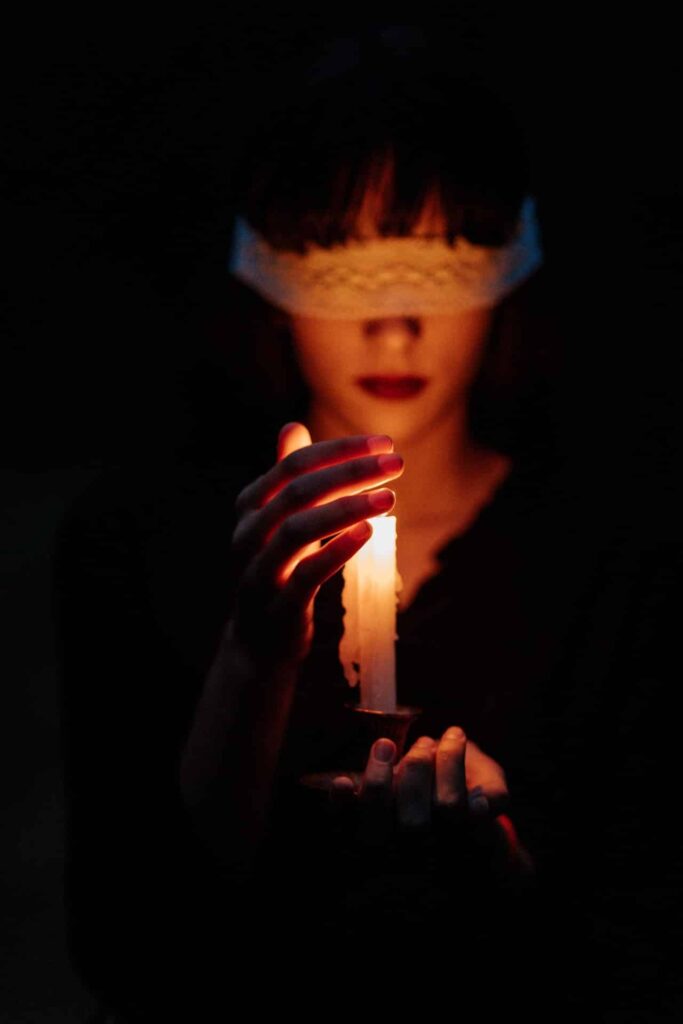
In crafting a horror movie, the structure is vital to elicit fear and suspense. Utilizing classic horror movie structure also helps to develop strong characters, and carefully plan the story’s progression. Doing so will help create a horror film that leaves a lasting impact on the audience.
Understanding Genre Paradigms
Genre serves as a blueprint that guides filmmakers and storytellers. Filmmakers hope to create narratives that resonate with specific audiences. Adhering to genre expectations provides a familiar framework to immediately connect with viewers. This framework also provides room for creativity and innovation. Strike the right balance to craft engaging and memorable works within the horror genre.
It is crucial for creators to understand genre paradigms. Those who truly understand can navigate the delicate balance between trope and cliché. Genre mastery will help you satisfy enthusiasts and general audiences alike.
Horror Defined: Core Elements
Horror, as a genre, is primarily defined by its ability to evoke fear, dread, and anxiety in its audience. Films in the gorror genre aim to elicit visceral and emotional responses that can range from mild unease to intense terror. There are two core elements that capture the essence of horror. A good horror film, much like a good roller coaster, has a build-up and climax.
The build-up and climax in horror create a sense of pacing and timing that maximizes the impact of suspense and fear. Gradual tension-building lulls the audience into a state of vulnerability. This makes the climax all the more shocking and memorable.
The horror genre’s focus on build-up and climax make the genre a unique and captivating medium. It is ripe for those who want to explore the darker aspects of human emotion and imagination.
Foundations: The Basic Horror Narrative
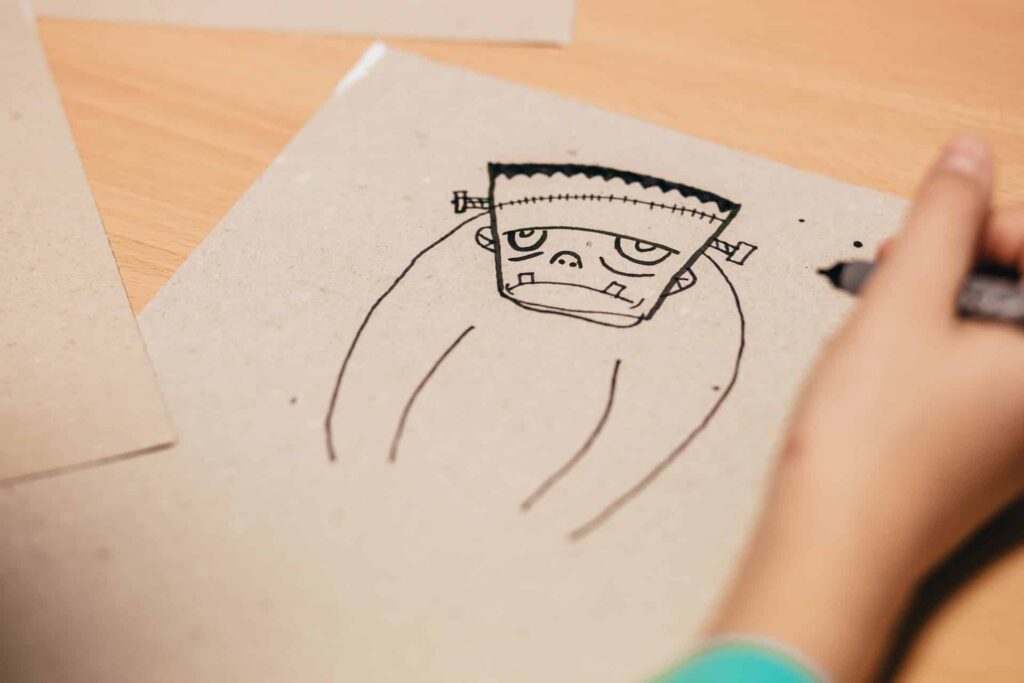
In horror writing, as with most screenwriting, it’s essential to establish a clear three-act structure. This framework effectively builds and resolves the key elements of storytelling. In horror, this structure can be broken down into three key acts: The Introduction of the threat, The Struggle with the threat, and The Confrontation and Resolution.
Act 1: Introduction of the Threat
Establishing Normalcy:
Act 1 begins by introducing the audience to the ordinary world in which the story is set. This involves the introduction of the main characters, their daily lives, and the environment. Create a sense of familiarity and comfort to contrast with the impending horror.
Foreshadowing:
Drop subtle hints and story elements that indicate the presence of a looming threat. These hints will pique the audience’s curiosity and unease without revealing too much.
Unveiling the Threat:
As Act 1 progresses, gradually unveil the nature of the threat. This may include strange phenomena, or an in-person encounter with the antagonist. The audience should begin to realize that something about this “ordinary” world isn’t quite right.
Act 2: Struggle with the Threat
Escalation of Fear:
Act 2 is where the tension and fear escalate. The threat becomes more pronounced, and its malevolent nature becomes clearer. The characters’ initial disbelief or denial gives way to genuine fear and panic.
Character Vulnerabilities:
Explore the vulnerabilities and flaws of the main characters. Fear brings out and amplifies their weaknesses. The escalation of fear forces them to confront their own limitations. The characters’ struggle to adapt and survive is a central focus in horror movie structure.
Building Suspense:
Use suspense-building techniques to keep the audience on edge. Jump scares, eerie atmospheres, and psychological mind games are all horror movie staples. (More on those later.) Continue to foreshadow the impending climax and keep the audience guessing.
Act 3: Confrontation and Resolution
Climactic Confrontation:
Act 3 is the culmination of the horror narrative. The characters, armed with knowledge and determination, confront the threat head-on. This confrontation will be intense and often filled with dread. Showcase the extent of the horror (physical, psychological, emotional) to really drive it home.
Resolution:
Provide closure by resolving the conflict, either through victory, defeat, or even a twist ending. The audience should experience some type of closure even if your protagonists fail.
Horror often has casualties and leaves lingering unease or ambiguity. The resolution doesn’t necessarily mean a happy ending.
Final Shock:
Consider delivering a final shock or revelation in the closing moments. This can leave the audience with a haunting or thought-provoking image that sticks with them even after the film is over.
Adhering to this basic three-act structure, you can create a compelling horror narrative. Take the audience on a journey from a world of normalcy to one filled with fear and uncertainty. Then as stakes heighten provide a thrilling climax and resolution. This framework provides the foundational elements upon which you can build a more complex and chilling horror story.
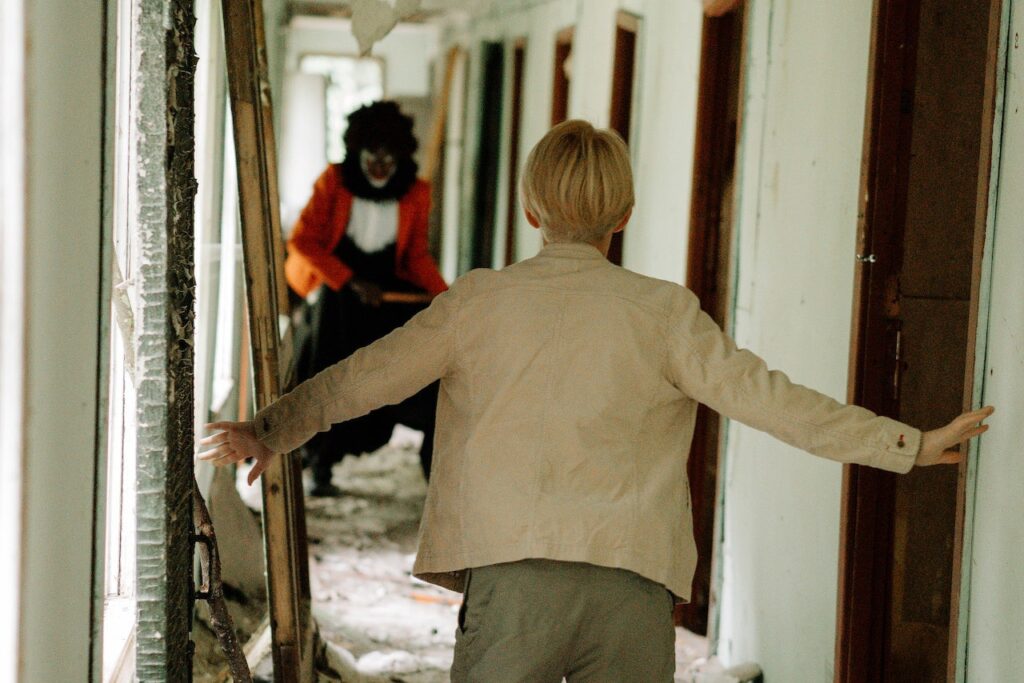
Room for Creativity
The framework of the basic horror narrative structure — Introduction, Struggle, Confrontation and Resolution — is just that; a framework. Within that structure there exists remarkable flexibility and room for creativity. It is in the nuances and unique twists that filmmakers and screenwriters have the opportunity to shine. This allows them to unleash their creativity and deliver truly captivating horror experiences. Whether through scares, character exploration, or a fresh take on established tropes, the possibilities for creative storytelling within this framework are endless.
Subgenres and Their Unique Structures
Horror is a genre known for its diversity. Within its broader framework various subgenres emerge. Each subgenre comes with its own structure and thematic elements. Here’s a brief overview of some popular horror subgenres. See how they tweak the basic horror narrative structure to best serve their needs.
Slasher:
Slasher films often focus on a relentless killer pursuing a group of victims, characterized by gruesome and graphic violence. The introduction of the threat is typically the killer’s initial strike. A cat-and-mouse struggle follows to heighten tension. The confrontation usually involves a final showdown between the survivor and the killer.
Monster:
Monster movies feature large, often otherworldly creatures terrorizing humanity. Introduction involves the gradual reveal of the monster’s existence. The struggle revolves around evading or fighting the creature, with the climax centered on the final battle against the monster.
Supernatural:
Supernatural horror delves into the realm of the paranormal, featuring ghosts, demons, or seemingly spiritual forces. The introduction of the threat is often in the form of eerie occurrences and ghostly sightings. The struggle may involve unraveling the mystery behind the otherworldly events, with the climax involving a confrontation with the supernatural entity.
Found Footage:
Found footage films simulate real, amateurish recordings, creating a sense of authenticity. The struggle involves the characters documenting and reacting to supernatural or terrifying events. The climax may reveal the ultimate fate of the characters or the source of the footage to add chilling backstory.
Each subgenre offers a unique spin on the basic horror structure. This allows for variations in pacing, narrative focus, and the nature of the threat. Storytellers may cater to different fears and preferences within the broader horror genre. Doing so demonstrates the adaptability and creativity that make horror so captivating and enduring.
Horror Tropes: To Embrace or Subvert?
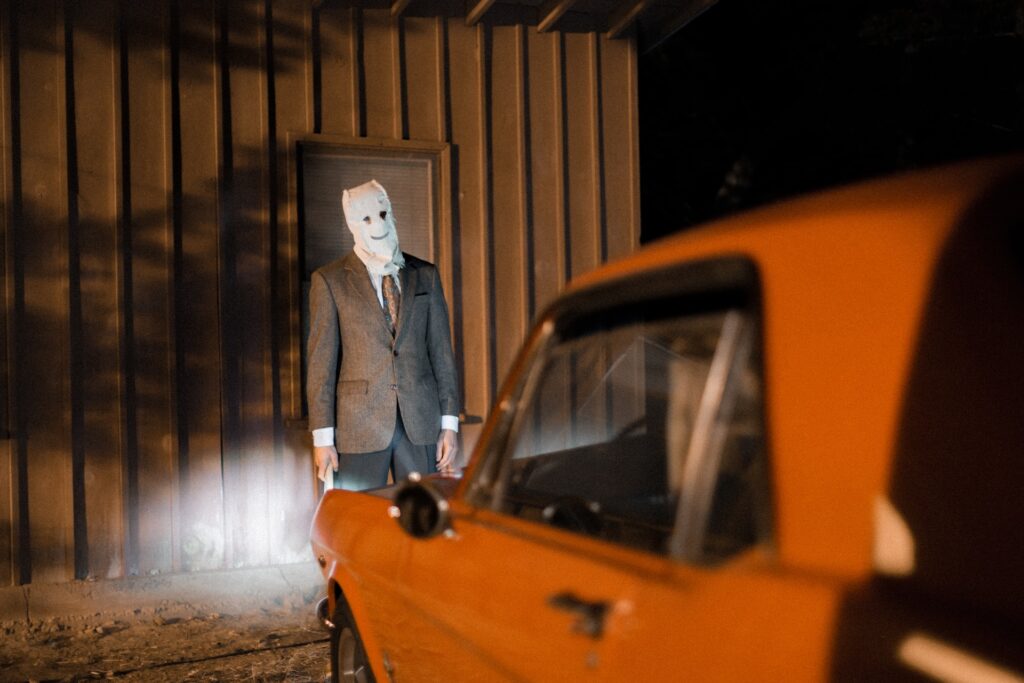
Common horror movie tropes are often criticized for their predictability. However, they can serve as powerful tools in crafting effective and engaging narratives. The key lies in knowing when to embrace these tropes and when to subvert them.
Let’s take a look at some common horror tropes and tips on how to use or subvert them effectively.
Jump Scares:
Sudden, startling moments designed to frighten the audience. (Is it even a horror movie without at least one?)
Embrace: Well-timed jump scares can be effective in creating tension and delivering quick shocks. Use them sparingly to maintain their impact.
Subvert: Catch your audience off guard by setting up potential jump scares but then defying them. You can also subvert expectations by changing the timing or direction of the jump scare.
The Inescapable Threat:
Characters feel trapped and unable to escape the danger. This can come in the form of a physical barrier or mental block.
Embrace: Use this trope to heighten tension and create a claustrophobic atmosphere. Emphasize the characters’ desperate struggle to survive.
Subvert: Introduce clever and unexpected means of escape or empowerment. Give the characters unexpected agency in the face of the threat.
“Do It” and Die:
The expectation that characters who engage in morally questionable behavior are more likely to meet a grisly demise.
Embrace: Lean into the trope to play on audience expectations. Create tension by having characters who engage in risky behavior face dire consequences. This can reinforce a moralistic theme and deliver traditional horror scares.
Subvert: Challenge the trope by providing unexpected character outcomes that defy traditional morals. Allow for more nuanced character development and a departure from typical horror narratives.
For a more in-depth look on horror tropes and their place in your script check out these 7 Classic Horror Tropes
Horror tropes can be powerful storytelling tools when used judiciously. Embracing them can create a sense of familiarity and comfort for the audience. Meanwhile subverting them can breathe fresh life into a script. Whichever way you choose, the goal should be to keep viewers on the edge of their seats and challenge their expectations. Balancing between these approaches allows for innovative and memorable horror storytelling.
Horror and Humor: The Balancing Act
Humor, when skillfully woven into horror narratives, can be a potent tool for enhancing the overall experience. It serves to alleviate tension, create contrast, and engage the audience emotionally. Successful horror comedies have demonstrated the importance of this balancing act. By blending fear and laughter they create memorable and enjoyable films.
Examples of Successful Horror Comedies:
- “Evil Dead 2” (1987): Sam Raimi
This film combines gory horror with slapstick comedy, creating a unique and enduring cult classic.
- “Shaun of the Dead” (2004): Edgar Wright
A seamless blend of zombie horror with dry British wit. It delivers laughs and scares in equal measure.
- “Cabin in the Woods” (2012): Joss Whedon and Drew Goddard
A brilliant subversion of horror tropes with an injection of dark humor into the plot. It also offers a humorous meta-commentary on the genre when playing into tropes.
- “Get Out” (2017): Jordan Peele
A masterful use of satire and humor to address social issues. At the same time Peele delivers genuine moments of horror, both physical and psychological.
The Importance of Levity in Horror
Horror often relies on building tension, and humor provides moments of relief for the audience. This allows viewers to manage their fear and stay engaged throughout the story. Humor can endear characters to the audience. When viewers care about the characters, their fates become more emotionally impactful, whether in humorous or frightening situations.
Comedy can be used to subvert genre expectations, keeping the audience on their toes and avoiding predictability. This subversion leads to more surprising and satisfying outcomes. Humor can take various forms, from witty banter to dark satire. This versatility allows filmmakers to tailor the balance of horror and humor to suit the tone and themes of their work.
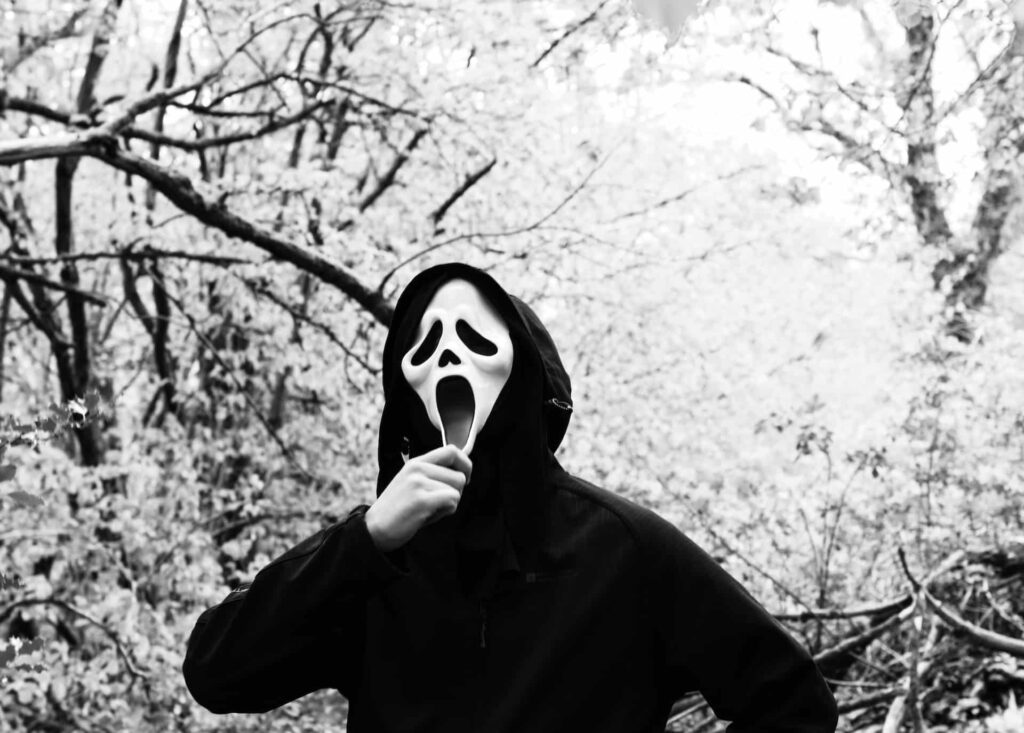
The Final Scream
The great enduring appeal of horror movies lies in their timeless ability to evoke fear and morbid fascination. Yet horror movies also give audiences a safe space to interact with the dark side of the human psyche. It’s evident that horror is not confined to one formulaic approach. As we’ve explored the structure of horror narratives it’s clear what creative potential lies within the genre. When given the consideration, boundless opportunities present themselves for reinvention and innovation.
The structure of horror movies affords aspiring screenwriters and filmmakers a solid foundation to craft compelling narratives. Keep in mind, the key to making a mark in this genre is to infuse your unique voice, perspective, and creativity. Embrace the conventions when they serve your story, and fearlessly subvert them when it suits your vision. This balance between tradition and transformation is where great horror truly thrives.
Bonus: Expert Tips & Tricks
Renowned horror filmmakers and writers offer valuable insights on mastering the horror movie structure:
Guillermo Del Toro – “Horror is a shrine to imperfection and tells you it’s okay to be a monster. We are all monsters at the end of the day.”
Stephen King – “The most important things to remember about backstory are that (a) everyone has a history and (b) most of it isn’t very interesting. Stick to the parts that are, and don’t get carried away with the rest.”
Jordan Peele – “I think the best and scariest monsters in the world are human beings and what we are capable of, especially when we get together.”
Alfred Hitchcock – “A suspense movie, at least from my point of view, is giving the audience information in advance. A surprise takes ten seconds, while anticipation can take an hour.”
In the world of horror, storytelling is both a craft and an art. Embrace the foundations, experiment with structure, and let your imagination run wild. Whether you’re crafting tales of supernatural terror, psychological horror, or an obscure subgenre. Remember, the true essence of horror lies in the anticipation of the unknown and the thrill of the unexpected.
Ready to get started on your horror script? Check out this guide on How to Write Horror in 2023
